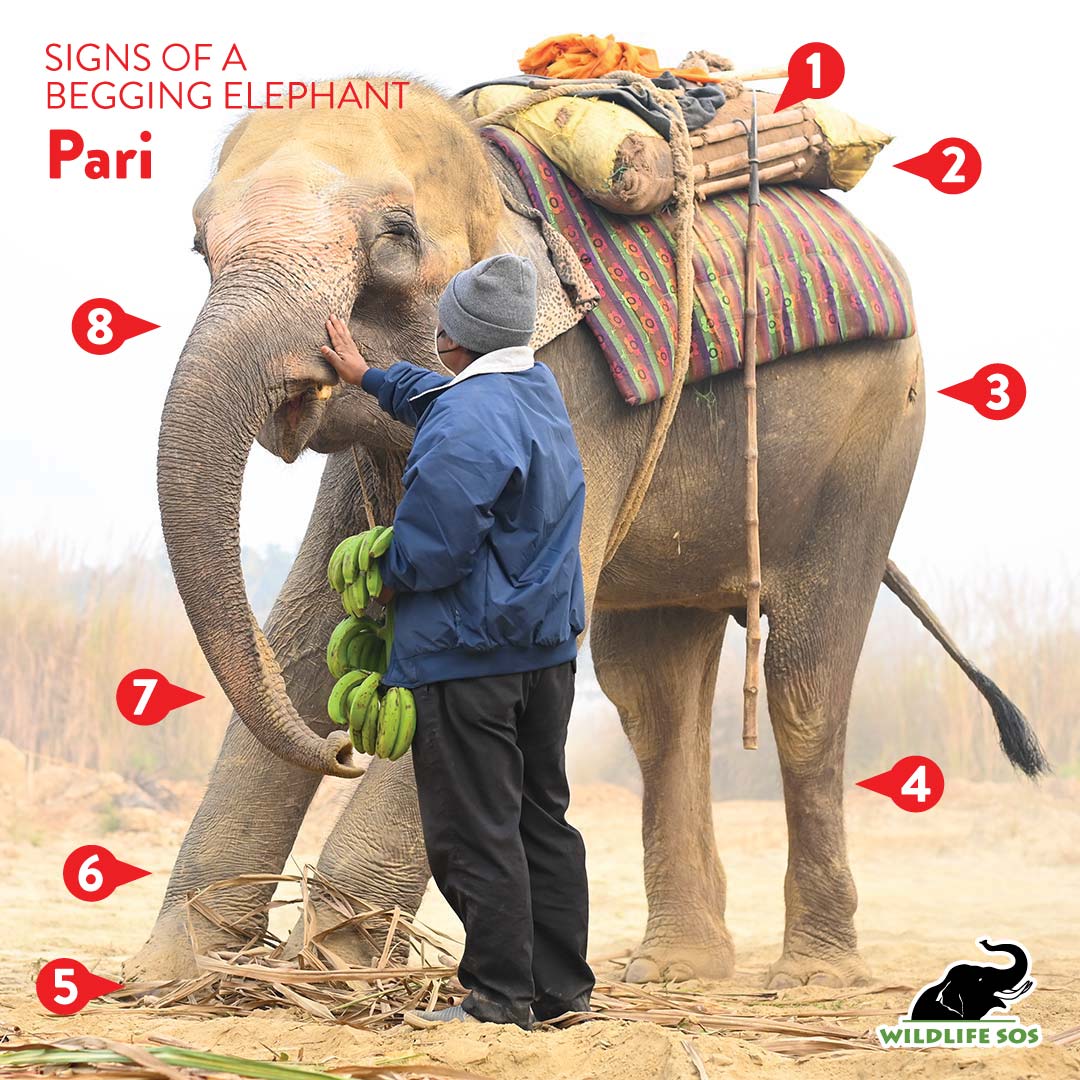Ending The Brutal Centuries-Old Practice Of ‘Begging’ Elephants
https://action.wildlifesos.org/page/162957/petition/1?ea.tracking.id=Website_Button PETITIE
Wildlife SOS has a bold plan to save all of India’s begging elephants within the next 5 years. By 2030, the ambitious initiative could make begging elephants a thing of the past.
When Wildlife SOS first began the campaign to bring an end to ‘dancing’ bears, most people said it couldn’t be done. In the late 1990s, we embarked on a nationwide effort to save all sloth bears that languished at the end of the rope. By 2009, headlines read “There are no more ‘dancing’ bears in India!” It took a decade of focus to overcome seemingly insurmountable challenges, but Wildlife SOS was able to achieve what seemed impossible to most … every last dancing bear in India was rescued and brought to sanctuary.
Since then, Wildlife SOS has become the leading advocate for captive elephants by building India’s first:
- Humane Elephant Rescue Centers with compassionate care and management techniques.
- India’s first Elephant Hospital using modern equipment and medical practices.
- A specially designed ambulance to rescue elephants in distress.
- Programs to handle elephants through positive conditioning using a protected contact wall.
“Wildlife SOS has been saving elephants for more than a decade, and we have seen firsthand what begging elephants are forced to endure. We have rescued many, but tragically, some elephants have succumbed to their untreated injuries before help could reach them. These situations have been immensely heartbreaking, yet driving us to action. We knew we couldn’t stand by and wait for another tragedy, now is the time to lead an organised effort to end the cruel practice of begging elephants once and for all.” – Kartick Satyanarayan, CEO and Co-Founder, Wildlife SOS

To help India’s begging elephants, Wildlife SOS understands the systemic problems and the steps that need to be taken to affect change. We’re ready to lead a visionary campaign to bring an end to begging elephants.
What exactly is a begging elephant? These elephants are rented-out or leased for money, and in India there are almost 300 that meet these criteria. Usually captured in the wild and broken to obey commands, they can be seen, night and day, near highways or walking in chains on the busy streets in major cities. Often illegally owned or held without legal approvals, the elephants are isolated, deprived of medical care and proper nutrition, and are tightly chained when not working. Even though they can be the centre of attention at weddings and ceremonies, their suffering goes unnoticed and they are worked until they collapse.
Many of the elephants Wildlife SOS has rescued or attempted to save were classified as begging elephants. Elephants like Lakshmi, Pari, Moti, Emma, Bhola, Raju, Mohan, Nina, Asha, and Zara were all rescued from a brutal life of begging. Like most of the estimated 2,700 Indian captive elephants, they faced the unbelievably cruel “phajaan” process to mentally break their spirit before being trafficked and sold into captivity.
These elephants suffer endlessly, and we are determined to bring this heartbreaking practice to an end. Our five-step initiative involves helping these elephants with the following programs:
- Rescue – Getting the elephants off the streets and into rescue centers like ours where they will be properly cared for.
- Outreach – Providing medical care to the elephants currently on the streets. We believe giving the elephants a reprieve from their suffering shouldn’t wait until they are rescued.
- Prevention – Preventing more elephants from ending up on the streets by supporting law enforcement and anti-poaching programs.
- Education – Build community awareness about the suffering of these elephants, and communicating their critical health needs.
- Training – Focus on teaching modern skills to handlers and veterinarians to deliver quality care to elephants.
Once again, we know that saving all the begging elephants is an ambitious and costly goal, and one that many might say is unobtainable. Wildlife SOS saved every last dancing bear, and we have the determination and focus to save every last begging elephant. That is our goal, and we won’t be deterred.
We hear a chorus of people who say they love elephants and are determined to make their lives better, and we can do this together. We have the foundational pieces in place to take decisive action, and with the support of the international community who are passionate about elephants, we know the time is right to show leadership and help these precious elephants. Our children will look back in horror that we let this cruel practice continue, or they will look back in pride that we were the generation to put an end to begging elephants in India.
You can start by signing our petition and pledge that, together, we will bring an end to begging elephants by 2030. [SIGN THE PETITION]
Geen opmerkingen:
Een reactie posten